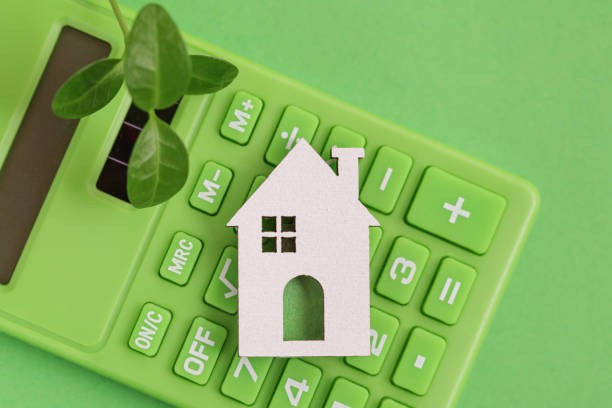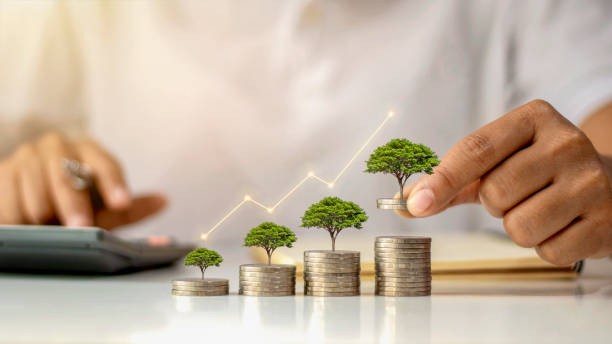Green Finance in Focus: Investing in a Sustainable and Profitable Tomorrow
Green Finance is leading the way and becoming very in demand.
While it may require a pretty penny, choosing to go green is a worthwhile decision that can positively impact the environment and society.
There is no getting around the fact that eco-friendly products are pricey. Products crafted from recycled materials, such as shopping bags, LED bulbs, and clothes, may cost slightly more than those made from traditional materials.
The fact that every dollar we invest in protecting the environment will pay off in the long run, cannot be overlooked. For every dollar invested in being green, a cent more is added as an investment to the planet's and its people's long-term well-being.
Financial institutions can provide sustainable banking options encouraging clients to adopt eco-conscious behaviors. Banks are taking giant strides in providing consumers with green banking products that motivate them to make green and sustainable choices. To better understand the concept, consider the following eco-friendly retail banking products that serve as prime examples.

- A green mortgage financing option allows individuals to purchase a property that meets specific energy efficiency standards. A green mortgage focuses on creating environmentally-safe buildings. The mortgage intends to inspire buyers to consider their home's environmental consequences and make an effort to make financial contributions in line with those impacts.
- The concept of green financing is in no contrast with the conventional mortgage system. This implies that you will still be obliged to make monthly payments, including interest charges. The primary distinction is that green funding focuses on ecologically favorable and long-term initiatives, including installing solar panels or energy-saving technologies. It is a practical financing solution for those who want to make environmentally responsible decisions while meeting their financial obligations.
- There are a plethora of options available that can help people make environmentally friendly choices while also saving them money. It's great to know that green financing can be a more affordable option for those looking to buy a new home or invest in a rental property. Not only can you enjoy lower mortgage rates but also cashback incentives.
Climate Risk Insurance

Climate risk insurance is of the essence as it will improve people's protection against climate-related loss and damages. Climate risk insurance shields people and businesses from the consequences of catastrophic weather events.
Take, for example, the turmoil caused by natural disasters, which have claimed thousands of lives and caused enormous damage. Climate risk insurance sets the scene for a safer environment by lessening the impact of natural disasters and reducing the probability of catastrophe.
- Hurricanes, heat waves, floods, droughts, and storms are just a few examples of the many climate-related occurrences that climate risk insurance is designed to cover. The enticing aspect of climate risk insurance is that if policyholders suffer losses, damages, or financial troubles due to these climatic calamities, they will be compensated or given financial support.
- Insurance payments are critical in helping people maintain their financial stability and security and are essential to any comprehensive financial plan. Once the insurance payments are disbursed, they act as a safety net in times of need and take action to avert poverty, starvation, and debt. These benefits serve as a lifeline for those in need, helping them to weather the storm and regain their footing.
- Climate risk insurance is essential in promoting resilience and adaptation in the face of climate change. Through financial protection and support, insurance can help individuals, businesses, and communities recover from the devastating impacts of climate-related events such as extreme weather conditions and natural disasters. Insurance is critical in ensuring the sustainability and longevity of our environment and society by mitigating the risks associated with climate change.
Green Lending

The overarching objective of green lending, also known as green loans, is to contribute to developing a sustainable and ecologically sound planet. It comprises lowering CO2 emissions or using cutting-edge technology safe for the environment. Compared to green bonds, green loans are made privately and smaller. Green bonds can be deposited or traded on an exchange. However, they have a higher transaction cost.
- There are considerable upsides for borrowers and lenders who take out green loans. Benefits include gaining access to a broad base of investors, especially while seeking an investment that has set its sights on ESG factors, causing a favorable effect on reputation and trustworthiness.
- Green loan principles are a set of principles presented as a framework to shed light on the situations under which a loan could be labeled "green" to ensure consistency throughout the green loan industry. The principles consider various factors, such as the project's environmental impact, using renewable energy sources, and implementing energy-efficient technologies.
- Providing financing for businesses to establish solar parks, constructing buildings with lower emissions compared to the conventional construction technique, and developing sustainable water projects with lower climate impacts are some instances of providing green loans to businesses.
Why is Green Finance important?
Using green financing can help in
Environmental protection
- Green money is critical in environmental conservation by encouraging sustainable economic growth and tackling environmental issues. It alludes to financial investments, services, and products that fund initiatives and activities having favorable ecological impacts.
- Green finance can focus on investment capital on green projects such as renewable energy, energy efficiency, sustainable agriculture, clean technology, and green infrastructure. It supports the scaling up of programs that help to mitigate climate change, reduce pollution, save resources, and protect ecosystems by offering financial resources.
- Green finance is crucial in expediting the switch from fossil fuels to renewable energy sources. Solar, wind, hydro, and geothermal energy projects are supported in their development and implementation.
- Green finance fosters the expansion of renewable energy production by making it easier to acquire capital and lessening dependency on fossil fuels.
- Sustainable development
- Green financing encourages companies to adopt sustainable practices and incorporate environmental issues into their daily operations.
- Companies can get capital to assist their sustainability goals through green bonds, loans tied to sustainability, and other financial instruments. This entails lowering carbon emissions, enhancing the sustainability of the supply chain, and applying ecologically friendly procedures.
- Green financing promotes accountability and transparency by encouraging companies to track and report environmental performance.
- Green finance intimately correlates with legislative initiatives and regulatory frameworks that support sustainable development.
- Green finance operations are facilitated by rules, tax exemptions, and incentives offered by governments and international organizations. These regulations foster innovation and financial investment in initiatives that benefit the environment, creating an atmosphere conducive to expanding green financial markets.
Economic Growth
By encouraging green industries, advancing technological innovation, creating new market opportunities, increasing resource efficiency, bolstering financial stability, enhancing reputation, drawing investments, and fostering climate change resilience, green finance helps to boost economic growth. Easing the transition to a resilient and sustainable economy helps solve environmental problems while generating financial gains.
- Innovative technologies that address environmental problems are encouraged to be developed and implemented through green money. Investments in clean energy, sustainable infrastructure, and circular economy projects fuel new technology and process development. As a result, productivity increases, and new economic opportunities are generated.
- Green money is essential to increase resistance to climate change's effects. It aids economies and communities in preparing for and addressing climate-related difficulties by promoting investments in measures for coping with the impact of climate change, such as resilient infrastructure, efforts to reduce the risk of disaster, and insurance programs. This increases economic stability and reduces the likelihood of any adverse effects of climate change on development and growth.
- Risk Management
- Green finance pushes financial firms to use risk management strategies that are environmentally friendly. They must incorporate environmental, social, and governance (ESG) considerations into their risk assessment frameworks to do this. Financial institutions can identify and manage developing risks, encourage responsible investment techniques, and link their operations with sustainable development goals by considering ESG risks, such as climate change, resource depletion, and social repercussions.
- The creation of risk transfer and insurance channels for hazards associated with climate change is supported by green financing. This includes catastrophe bonds, parametric insurance, and other cutting-edge financial tools that assist in transferring climate-related risks from sensitive industries to the financial markets. Green finance makes risk transfer easier, promotes quick recovery after disasters, and lessens the financial burden on affected people, enterprises, and governments.
- Attracting Investors
- There has been a notable shift in the investment landscape in recent years towards environmentally conscious choices. This trend is evident across various investor groups, from individuals to large institutions and governments. As a result, green businesses and projects are increasingly becoming the focus of funding efforts, leading to a surge in their growth and expansion prospects. By directing capital towards these sustainable ventures, investors can play a crucial role in promoting a greener future while potentially generating financial returns.
- Environmental solid credentials often make it simpler for businesses and projects to get funding through green finance channels. Numerous financial institutions and investors have funds or resources designated for green initiatives. Companies can access this specialized financing pool and increase their access to funding possibilities by adhering to green finance guidelines.
Reputation and Brand Value
Investors find green finance appealing because it has several advantages. These include risk management, market potential, governmental assistance, reputation and brand value, long-term resilience, and enhanced financial availability. Green finance will become a more significant factor in drawing investors looking for financially sound and environmentally responsible investment opportunities as the focus on sustainability continues to expand.
- With the growing interest of customers and investors in a company's dedication to sustainability and social responsibility, it has become increasingly vital for businesses to adopt green finance methods. By implementing such approaches, companies can enhance their brand value and reputation, thereby gaining a competitive edge in the market. This benefits the company and contributes to improving society and the environment.
- Green finance investments show a dedication to sustainability and responsible investing. It enables investors to match their environmental ideals and principles with their holdings. This can improve their brand value and reputation, making them more desirable to institutional investors, stakeholders that appreciate ecological sustainability, and socially aware investors.
Regulatory compliance
- A corporation's reputation and stakeholder connections are directly related to regulatory compliance. Green finance exemplifies a dedication to ethical business conduct and environmental sustainability. This meets the expectations of different stakeholders, including clients, staff members, shareholders, and communities. Fulfilling these demands improves a business's reputation, lowers the chance of reputational harm, and promotes good interactions with regulators and other stakeholders.
- Green financing aids in reducing the regulatory risks connected to environmental laws and policies. Companies can proactively handle anticipated legislative changes or tightening of environmental standards by investing in ecologically beneficial projects. Their risk of non-compliance and the ensuing fines or legal liabilities can be reduced by adjusting their processes and technologies to align with future regulatory standards.
Long-term value creation
- Implementing green finance strategies can significantly benefit companies by enabling them to identify and utilize commercial sustainability and environmental preservation opportunities. By incorporating these strategies, companies can create long-term value for their shareholders by increasing their profitability and resiliency. Green finance can promote sustainable business practices that benefit the environment and contribute to the company's growth and success.
- Green finance encourages investments that contribute to long-term sustainability and resilience. By investing in projects that address climate change, promote resource efficiency, or support sustainable development, investors can position themselves for future market trends and regulatory changes. This future-proofing approach helps protect and create value over the long term.
It is essential to align financial goals and environmental objectives To ensure a prosperous and sustainable future for the financial industry and the planet. This can be achieved by implementing green finance, which provides the necessary framework and resources to support this alignment. We can pave the way towards a more environmentally conscious and financially secure future by embracing green finance. This approach benefits the planet and creates new opportunities for growth and innovation within the financial industry. Therefore, we must continue to prioritize the integration of green finance into financial planning and decision-making processes.
Source: Zero circle
Collected by the author DTSVN team - Digital transformation solutions for the Finance - Banking
-------------
DTSVN is a pioneering Digital Transformation Company providing the latest digitization solutions exclusively for businesses in the Finance - Banking field in Vietnam; helping banks and financial institutions quickly complete the technology system for Digital Transformation.
Contact us now and experience our significant software solution here.